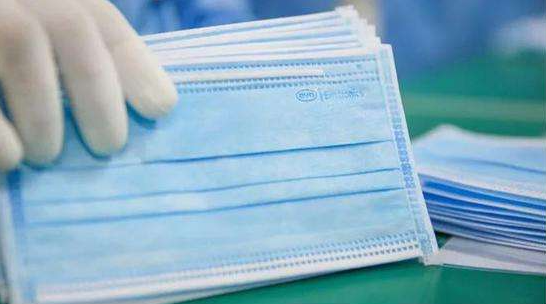In this protracted battle against the “new crown pneumonia epidemic”, the protective equipment used by the majority of medical workers and the people, such as hundreds of millions of protective masks and protective clothing, are mainly made of spunbond and meltblown nonwovens. post-processing.
What is a nonwoven material?
According to the national standard GB/T 5709-1997, non-woven materials, commonly known as non-woven fabrics, are sheets, fibers made of directional or randomly arranged fibers that are combined with each other by friction, cohesion or adhesion or a combination of these methods. Netting or batting (excluding paper, woven, tufted, stitchbonded with stitched yarns, and wet rolled felt). The fibers used can be natural fibers or chemical fibers; short fibers, filaments or fibers formed in situ. In order to distinguish wet-laid nonwovens from paper, it is also stipulated that fibers with an aspect ratio greater than 300 account for more than 50% of the total mass, or fibers with an aspect ratio greater than 300 only account for more than 30% of the total mass. But its density is less than 0.4g/cm3, it belongs to non-woven material, and vice versa is paper.
The “heart layer” of the mask is meltblown
Most masks are mainly composed of three layers of non-woven fabrics, the inner and outer layers are mostly spunbond (S), and the “heart layer” is melt-blown non-woven (M), which is the key core material for masks to achieve barrier protection. . Spunmelt composite nonwovens also include SMS, SMMS, SSMMS and other varieties.
Features of Nonwovens
1. Materials between the four major flexible materials of traditional textiles, plastics, leather and paper. Different processing technologies determine the properties of nonwoven materials, some nonwovens are like traditional textiles, such as spunlace nonwovens; some are like paper, such as drylaid nonwovens; some are like leather, such as nonwovens Base PU leather, etc.
2. The appearance and structural diversity of non-woven materials. The diversity of raw materials and processing technologies used in non-woven materials determines the appearance and structural diversity of non-woven materials. From a structural point of view, most non-woven materials are dominated by a fiber network structure, with a single-layer thin network geometry in which the fibers are arranged in two dimensions, a network geometry in which the fibers are arranged in three dimensions, and some fibers are intertwined with fibers. The formed fiber mesh structure, some are structures in which fibers and fibers are bonded at the intersection points, some are fiber mesh structures in which the fiber intersection points are fixed by chemical adhesives, and some are made of fibers. The geometric structure formed by the aggregate; in terms of appearance, non-woven materials are cloth-like, mesh-like, felt-like, paper-like, etc.
3. Diversity of properties of non-woven materials. Due to the diversity of raw material selection and the diversity of processing technology, the diversity of non-woven material properties will inevitably result. Some materials are very flexible, some are very hard; some materials are strong, while others are very weak; some materials are dense, while others are fluffy; some materials have thick fibers, while others But very thin. Therefore, the properties of the material can be designed according to the use of the non-woven material, and then the corresponding process technology and raw materials can be selected and determined.
Classification of nonwoven materials
Types of nonwovens can be classified by web formation, reinforcement, or use. According to the web-forming method, it can be divided into dry-laid (mechanical carding, air-laid), wet-laid (rotary web, oblique web) and polymer spunlaid (spunbond, meltblown) , film cracking method, electrostatic method). According to the reinforcement method, it can be divided into mechanical reinforcement (needling method, spunlace method, stitch bonding method), thermal bonding (hot rolling method, hot air method, ultrasonic bonding method) and chemical bonding (dipping, spraying, foam, printing) , solvent, etc.). According to the use, it can be divided into medical and sanitary materials, filter materials, geosynthetic materials, vehicle materials, building materials, electrical and electronic industry materials, packaging materials, agricultural materials and household decoration materials, etc., which are used in all aspects of our daily life.
Post time: Apr-20-2022

